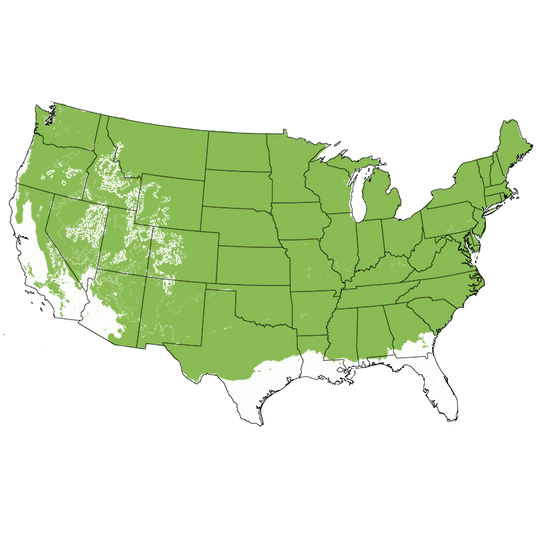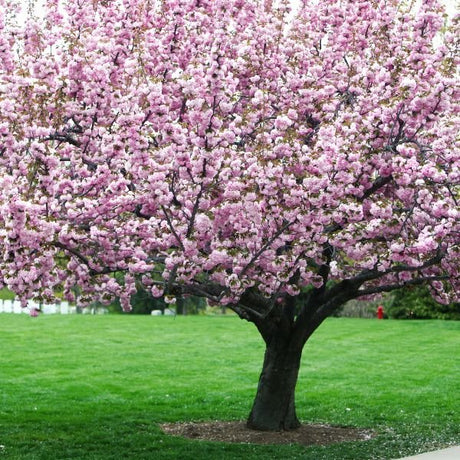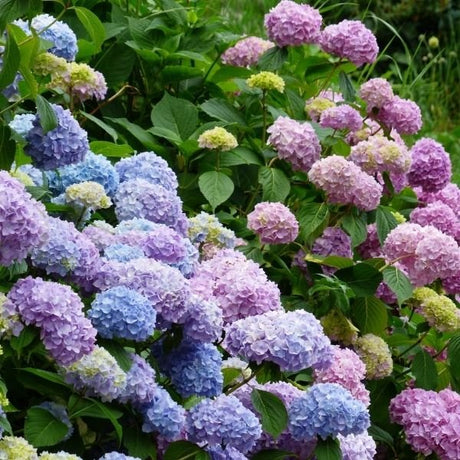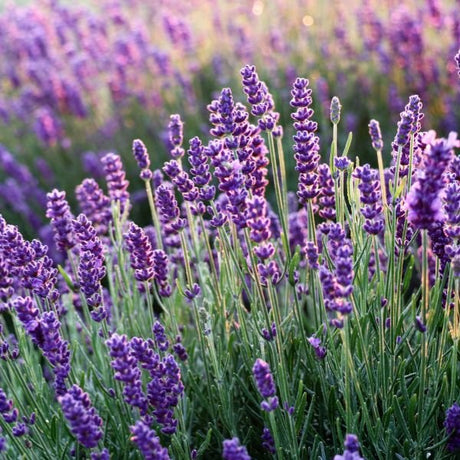Black Oak Tree
- Stay Protected with Plant Sentry ™
Black Oak Tree - #3 Container 2-3 Feet is backordered and will ship as soon as it is back in stock.
Plant Sentry™
Plant Sentry™
Plant Sentry is designed to protect both consumers and the nursery trade from invasive plant pests and diseases. Sites that display the Plant Sentry protection badge are protected from consumers buying and nurseries shipping material carrying invasive pests and diseases.
This proprietary eCommerce software prevents the shipment of a restricted plant to each state. The Plant Sentry system includes a shipment certification program. The Plant Sentry Compliance Officer works closely with NatureHills.com and each nursery or fulfillment center to ensure only compliant plants are sold to customers.
Click Here to learn more

Delivery and Shipping
Delivery and Shipping
Shipping
To obtain a more accurate shipment time-frame, simply enter your zip code in the “Find Your Growing Zone” box to the right. Our plants are grown all over the country and lead time on items may be different because of this. Once your order is placed, you will also receive the specific shipment time-frame information as part of your order confirmation. Once an item ships, you will receive shipment notification and tracking numbers, so you can follow along while your plant travels to your doorstep. We use FedEx, UPS, or USPS at our discretion.
Due to winter weather we have put a hold on shipping to the areas shown below in grey. You can still order now and we will ship the plant to you during an appropriate time for your zone.
Standard Shipping Rates
At Nature Hills we handle, package and ship the products you order with the utmost care to ensure healthy delivery. Shipping and handling charges are calculated based on the tables below. Please note that some items include an additional handling surcharge, these will be noted on the item's product page.
| From | To | S&H |
|---|---|---|
| $0 | $19.99 | $24.99 |
| $20 | $49.99 | $29.99 |
| $50 | $69.99 | $34.99 |
| $70 | $99.99 | $39.99 |
| $100 | $129.99 | $44.99 |
| $130 | $149.99 | $48.99 |
| $150 | $150+ | Approx 28% |
Click here to see our full rates
Buying Options for Plants
Nature Hills sells a large variety of plants with several options available. Plants are offered in both potted containers and as dormant bare root without soil. Here is a helpful resource to understand your options as you create a beautiful landscape with help from Nature Hills.
Ever wonder what a larger plant will mean for your landscape? Container Sizes are really all about the age of the plant!
Seasonally, Nature Hills offers hand selected, high quality bare root trees, shrubs and perennials. Bare root plants are sold by height from the top of the root system to the top of the plant. Plants may be taller than the height minimums.
- Popular sizes of select trees are 1 foot, 2 feet, 3 feet, etc.
- Popular sizes of select bare root plants is 1 foot, 18 inches, etc.
Nature Hills Container Size by Volume
Keep in mind, specific varieties and different growing conditions can affect the rate at which plants grow. Variations in size may occur.
| Young Plants to 18 Months | ||
|---|---|---|
| Size | Volume | |
| 2"x2"x3" | Ranges from | .18 to .21 dry quarts / .198 to .23 dry liters in volume |
| 4.5" Container | Equal to | .65 dry quart / .72 dry liter in volume |
| Sprinter Pot | Equal to | .63 dry quart / .69 dry liter in volume |
| 4" Container | Ranges from | .31 to .87 / .35 to .96 dry liter in volume |
| 6" Container | Equal to | 1.4 dry quarts / 1.59 dry liters in volume |
| 1 Quart | Equal to | 1 dry quart / 1.1 dry liter in volume |
| 5.5" Container | Equal to | 1.89 of a dry quart / 2.08 dry liters in volume |
| 4"x4"x5" | Ranges from | .8 to 1.1 dry quarts / .88 to 1.2 dry liters in volume |
| 4"x4"x6" | Ranges from | 1.0 to 1.3 dry quarts / 1.1 to 1.41 dry liters in volume |
| 4"x4"x9" | Ranges from | 1.1 to 2.1 dry quarts / 1.2 to 2.3 dry liters in volume |
| 4"x4"x10" | Ranges from | 1.7 to 2.3 dry quart / 1.87 to 2.53 dry liters in volume |
| Plants 18 Months - 2.5 Years Old | ||
|---|---|---|
| Size | Volume | |
| 2 Quart | Equal to | 2 dry quarts / 2.2 dry liters in volume |
| #1 Container | Ranges from | 2.26 to 3.73 dry quarts / 2.49 to 4.11 dry liters in volume |
| 5"x5"x12" | Equal to | 3.5 to 4.3 dry quarts / 3.85 to 4.74 dry liters in volume |
| Plants 2 - 4 Years Old | ||
|---|---|---|
| Size | Volume | |
| #2 Container | Ranges from | 1.19 to 1.76 dry gallons / 5.24 to 7.75 dry liters in volume |
| #3 Container | Ranges from | 2.32 to 2.76 dry gallons / 10.22 to 12.16 dry liters in volume |
| Plants 3 - 5 Years Old | ||
|---|---|---|
| Size | Volume | |
| #5 Container | Ranges from | 2.92 to 4.62 dry gallons / 12.86 to 20.35 dry liters in volume |
| #6 Container | Ranges from | 5.25 to 6.01 dry gallons / 23.12 to 26.42 dry liters in volume |
| #7 Container | Ranges from | 5.98 to 6.08 dry gallons / 26.34 to 26.78 dry liters in volume |
Plant Highlights
Black Oak Tree highlights at a glance!
Plant Highlights
Plant Highlights
-
Brand
-
Botanical Name
-
Growing Zones
-
Mature Height
-
Mature Spread
-
Sun ExposureFull Sun
-
Moisture
-
Soil
-
Growth RateMedium
-
Flower Color
-
Fall Color
-
Pruning Time
-
Bloom PeriodEarly Spring

Growing Zones 3-8
The mighty native Black Oak Tree (Quercus velutina) is very similar in appearance to the Red Oak but the main differences include the Black Oaks ability to thrive in poor and varied soils and having rounded lobed leaves more like White Oaks!
The green leaves have a notably velvety underside! Black Oak produces a good crop of acorns that provide wildlife with food.
It is sometimes called Yellow oak, Quercitron, Yellowbark Oak, or Smoothbark Oak, and this deciduous tree has deeply furrowed bark and on mature trees is nearly black, leading to its name! The thick, nearly-black bark is marked with deep furrows and irregularly broken ridges. The characteristic inner bark is bright yellow to orange, hence the alternate common name of Yellow Oak.
The wood, while hard and strong, is not as tough as the Red Oak. Still, it is used in much the same way. Historically, the inner bark was important for its tannin and as a source of yellow dye.
Hardy throughout USDA planting zones 3 to 8, the Black Oak is a resilient native that is cold-hardy and highly adaptable! The Yellow Oak name rings true once again in the autumn when its foliage erupts into vibrant shades of yellow-orange in the fall!
Landscape Application:
Black Oak is not extensively planted as an ornamental and shade tree but its fall color contributes greatly to the aesthetic value of Oak forests! Wildlife adore Oak trees for their acorns and Black Oaks generally have a good crop of acorns every 2 to 3 years and it can take a couple of years for the acorns to ripen on the tree before dropping. Forming an open round crown and sturdy straight trunk, these become outstanding legacy trees and are native keystone species!
The strong limbs make the Black Oak ideal for shelterbelts and windbreaks throughout your property, adding lush shade to large landscapes, and can grow into large specimen trees 60 - 80 feet tall and 40 - 50 feet wide. This medium-growth rate Oak tree thrives on dry uplands, slopes, and ridges.
- Rounded Lobes & Fuzzy Undersides
- Brilliant Yellow-Orange Fall Color
- Straight Trunk With Dark Deeply Furrowed Bark
- Deciduous Trees That Lose Foliage In The Fall
- Strong Limbs - Great Windbreak, Wildlife & Shelterbelt Trees
- Red Oak Family
- Wonderful Shade & Specimen Trees
#ProPlantTips for Care:
Black Oak trees occur naturally on poor sandy or clay hillsides and need full sun to grow their best. Any well-drained type of soil works great for these trees and new installations need regular deep waterings to establish a large drought-tolerant root system. Mulch supports the tree's growth and you should prune when the tree is dormant to correct shape and damaged branches.
- Need Full Sun
- Well-Drained Soil
- Moderate Moisture Needs
- Prune When Dormant
- Low-Maintenance Deciduous Trees!
Because of its significant wildlife value, the Black Oak is an important tree to add to your Oak tree collection! Order yours today at NatureHills.com!










